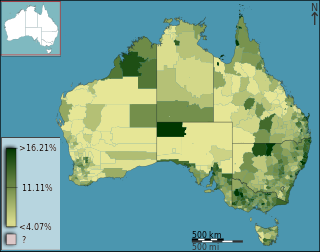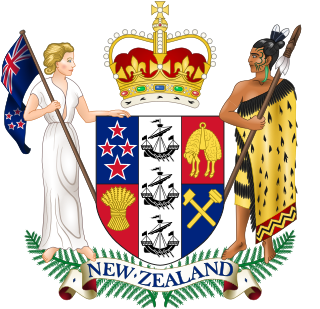
Shona McRory Robison is a Scottish politician who has served as Cabinet Secretary for Finance and Local Government since 2023. A member of the Scottish National Party (SNP), she previously served as Deputy First Minister of Scotland from 2023 to 2024. Robison has been the Member of the Scottish Parliament (MSP) for Dundee City East since 2003 and was an additional member for the North East Scotland region from 1999 to 2003.

The United States budget comprises the spending and revenues of the U.S. federal government. The budget is the financial representation of the priorities of the government, reflecting historical debates and competing economic philosophies. The government primarily spends on healthcare, retirement, and defense programs. The non-partisan Congressional Budget Office provides extensive analysis of the budget and its economic effects. CBO estimated in February 2024 that Federal debt held by the public is projected to rise from 99 percent of GDP in 2024 to 116 percent in 2034 and would continue to grow if current laws generally remained unchanged. Over that period, the growth of interest costs and mandatory spending outpaces the growth of revenues and the economy, driving up debt. Those factors persist beyond 2034, pushing federal debt higher still, to 172 percent of GDP in 2054.
Several policies regarding interior and domestic issues in Canada were planned and adopted by the Cabinet of Canadian Prime Minister Stephen Harper, after he came to office as the head of a minority government on February 6, 2006. At the beginning of the government's appointment, five policy priorities were identified in the areas of federal accountability, tax reform, crime, child care and health care.

Health care in Australia operates under a shared public-private model underpinned by the Medicare system, the national single-payer funding model. State and territory governments operate public health facilities where eligible patients receive care free of charge. Primary health services, such as GP clinics, are privately owned in most situations, but attract Medicare rebates. Australian citizens, permanent residents, and some visitors and visa holders are eligible for health services under the Medicare system. Individuals are encouraged through tax surcharges to purchase health insurance to cover services offered in the private sector, and further fund health care.

The 2008 Australian federal budget for the Australian financial year ended 30 June 2009 was presented on 13 May 2008 by the Treasurer of Australia, Wayne Swan, the first federal budget presented by Swan, and the first budget of the first Rudd government.

The American Recovery and Reinvestment Act of 2009 (ARRA), nicknamed the Recovery Act, was a stimulus package enacted by the 111th U.S. Congress and signed into law by President Barack Obama in February 2009. Developed in response to the Great Recession, the primary objective of this federal statute was to save existing jobs and create new ones as soon as possible. Other objectives were to provide temporary relief programs for those most affected by the recession and invest in infrastructure, education, health, and renewable energy.

The 2009 Australian federal budget for the Australian financial year ended 30 June 2010 was presented on 12 May 2009 by the Treasurer of Australia, Wayne Swan, the second federal budget presented by Swan, and the second budget of the first Rudd government. Swan commented that the budget would be tougher than in previous years. "Projected government revenue has fallen by $200 billion since the last budget because of the global economic crisis."
The healthcare reform debate in the United States has been a political issue focusing upon increasing medical coverage, decreasing costs, insurance reform, and the philosophy of its provision, funding, and government involvement.
The Minerals Resource Rent Tax (MRRT) was a resource rent tax formerly imposed by the government of Australia on profits generated from the mining of non-renewable resources in Australia. It was a replacement for the proposed Resource Super Profit Tax (RSPT).
The Canadian federal budget for fiscal year 2012–13 was presented to the House of Commons of Canada by Finance Minister Jim Flaherty on 29 March 2012. Among the most notable elements of the federal budget were changes to Old Age Security and a reduction of the budget for the Canadian Forces and the Canadian Broadcasting Corporation.

The 2012 Australian federal budget for the Australian financial year ended 30 June 2013 was presented on 8 May 2012 by the Treasurer of Australia, Wayne Swan, the fifth federal budget presented by Swan, and the second budget of the Gillard government. The budget was described as a "battlers" budget with benefits geared towards families and low income earners. It forecast a surplus of $1.5 billion in the financial year ended 30 June 2013.

The National Disability Insurance Scheme (NDIS) is a scheme of the Australian Government that funds reasonable and necessary supports associated with significant and permanent disability for people under 65 years old. The scheme was first introduced in 2013 following the "Make It Real" community campaign and advocacy from disability groups. The scheme is administered by the National Disability Insurance Agency (NDIA) as part of the Department of Social Services and overseen by the NDIS Quality and Safeguards Commission.

The 2013 Australian federal budget for the Australian financial year ended 30 June 2014 was presented on 14 May 2013 by the Treasurer of Australia, Wayne Swan, the sixth federal budget presented by Swan. The 2013 budget estimated total revenue of A$387.7 billion and spending of A$398.3 billion, a deficit of A$18 billion, with a return to surplus expected in the 2015 Australian federal budget. Some of the measures in the budget had been announced by various Ministers before the budget.

The New Zealand budget for fiscal year 2012–2013 was presented to the New Zealand House of Representatives by Finance Minister Bill English on 24 May 2012.

The Abbott government was the federal executive government of Australia led by the 28th Prime Minister Tony Abbott. The government was made up of members of the Liberal–National Coalition. The Leader of The Nationals, Warren Truss, served as Deputy Prime Minister. Following the 2013 Australian federal election held on 7 September, the Coalition defeated the second Rudd government, ending six years of Labor government. The Abbott government was sworn into office on 18 September 2013. Less than two years later on 14 September 2015, Malcolm Turnbull defeated Abbott in a leadership ballot, 54 votes to 44 and the Turnbull government became the executive government of Australia.

The 2014 Australian federal budget was the federal budget to fund government services and operations for the 2014/15 financial year. The 2014 budget was the first delivered by the Abbott government, since the Coalition's victory in the 2013 Australian federal election. Treasurer Joe Hockey presented the budget to the House of Representatives on 13 May 2014.

The 2015 Australian federal budget was the federal budget to fund government services and operations for the 2015/16 financial year. The 2015 budget was the second and last submitted by the Abbott government, since the Coalition's victory in the 2013 Australian federal election. Treasurer Joe Hockey presented the budget to the House of Representatives on 12 May 2015, it was his final budget before being replaced by Scott Morrison as Treasurer following the 2015 Liberal Party leadership spill.

The 2016 Australian federal budget was the federal budget to fund government services and operations for the 2016–17 financial year. It was presented to the House of Representatives by Treasurer Scott Morrison on 3 May 2016. It was the third budget to be handed down by the Liberal/National Coalition since their election to government at the 2013 federal election, and the first to be handed down by Morrison as Treasurer and the Turnbull government.

The 2018 Australian federal budget was the federal budget to fund government services and operations for the 2018–19 financial year. The budget was presented to the House of Representatives by Treasurer Scott Morrison on 8 May 2018. It was the fifth budget to be handed down by the Liberal/National Coalition since its election to government at the 2013 federal election, and the third and final budget to be handed down by Morrison and the Turnbull government.

The October 2022 Australian federal budget was the federal budget to fund government services and operations. The budget was presented to the House of Representatives by Treasurer Jim Chalmers on 25 October 2022. It was the first budget to be handed down by the Australian Labor Party since their election to government at the 2022 federal election. It was the second budget to be handed down in 2022, with the preceding budget being delivered in March by the prior government.









